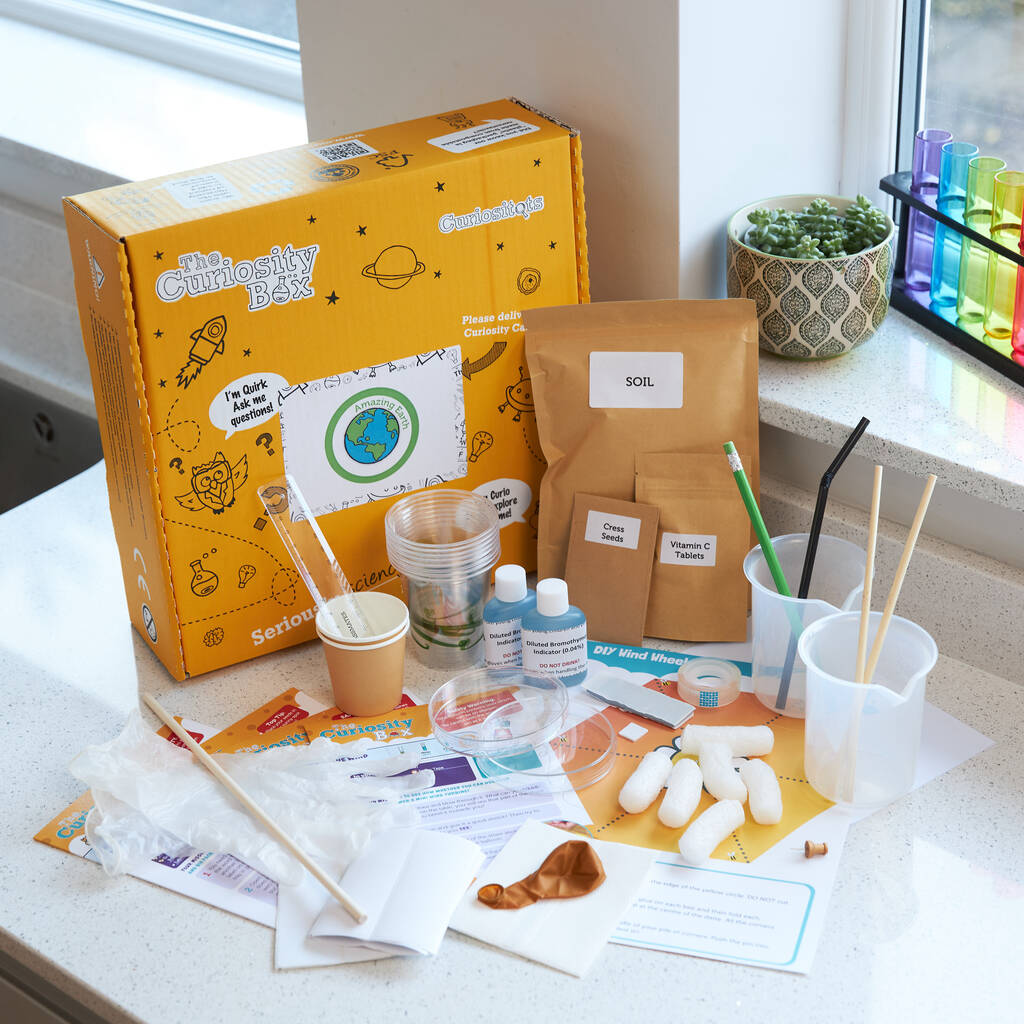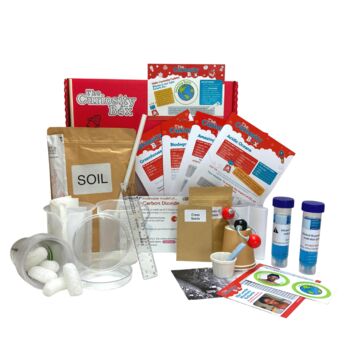Our planet is amazing and there's so much we can do to learn how to look after it. Enjoy activities to help save our planet!
The best way to explore the science and engineering in the world around us, Curiosity Boxes are designed to bring real science to life, in a fun, hands-on way. Using Montessori philosophy and curiosity-led learning, each Curiosity Box builds problem solving skills and gets children thinking scientifically.
Linked to the school curriculum and, where appropriate, the UN Sustainable Development Goals, each Box theme explores a different topic and features a young, inspiring role model doing real research in that field.
Our exploratory science and engineering kits will nurture the natural curiosity and spark imagination in the child you love.
The Amazing Earth Jumbo Box is for 7-11 yr olds and includes:
* The Greenhouse Effect: compare what happens when plants are grown in a greenhouse or on a windowsill. What can this tell us about our climate?
* Amazing Anemometer: Sustainable energy is what we all need! This activity explores the power of wind and how we might harness it to help reduce fossil fuel consumption.
* Acidic Oceans: Oceans and sea life are changing. This activity looks at these changes and how CO2 is impacting our oceans.
* Bio packaging: Awareness of plastic pollution has become global, but what can we do about it? This activity tests the degradability of some common materials.
PLUS a collectable CO2 Molymod!
The Tots Amazing Earth Box is for 4-6 yr olds and includes:
* Acidic Oceans: Oceans and sea life are changing. This activity looks at these changes and how CO2 is impacting our oceans.
* Windy Wheels: Find out how wind turbines work as a source of sustainable energy by making two different types of windy wheels
* Bio packaging: Awareness of plastic pollution has become global, but what can we do about it? This activity tests the degradability of some common materials.
* The Greenhouse Effect: compare what happens when plants are grown in a greenhouse or on a windowsill. What can this tell us about our climate?














